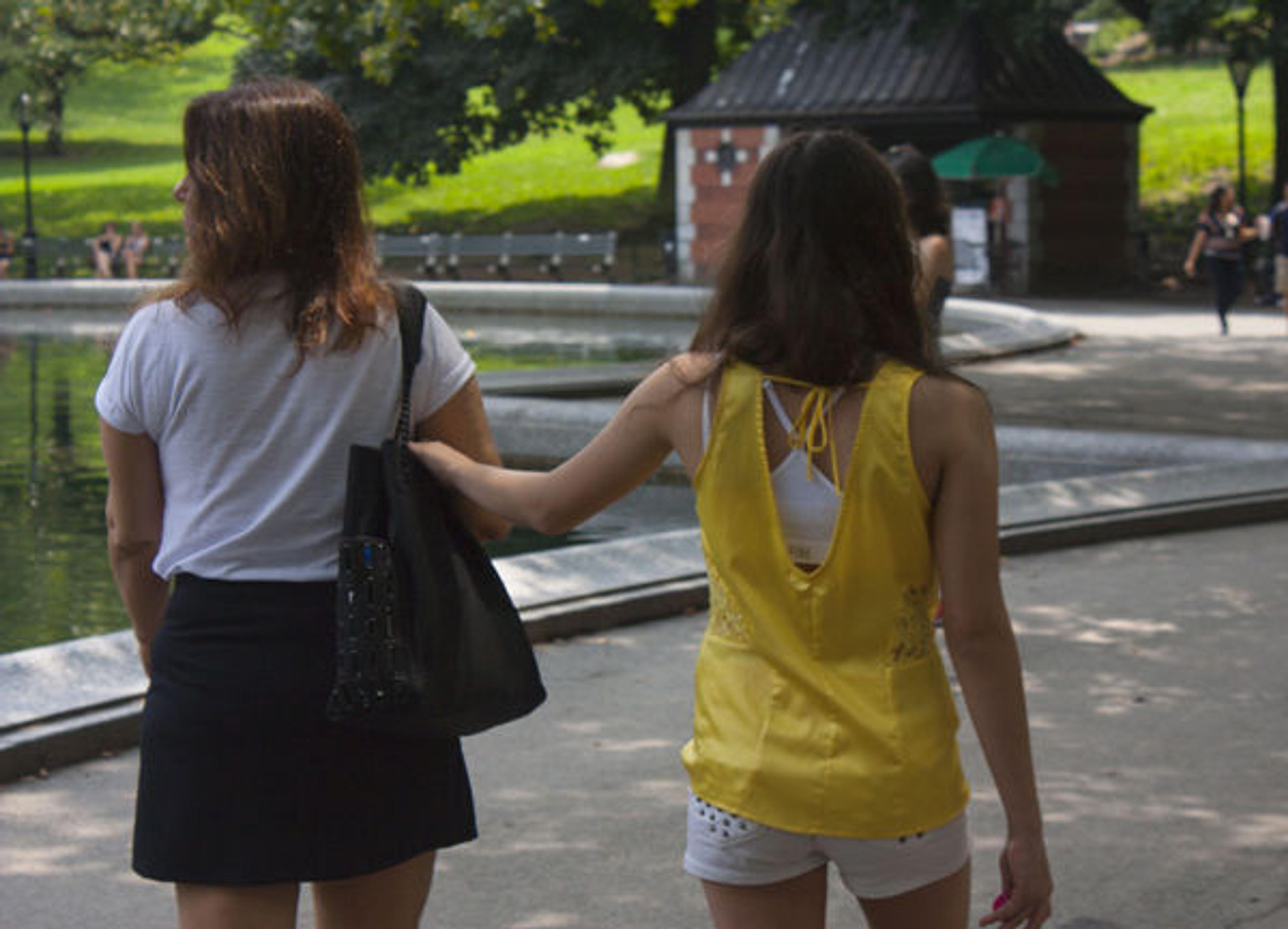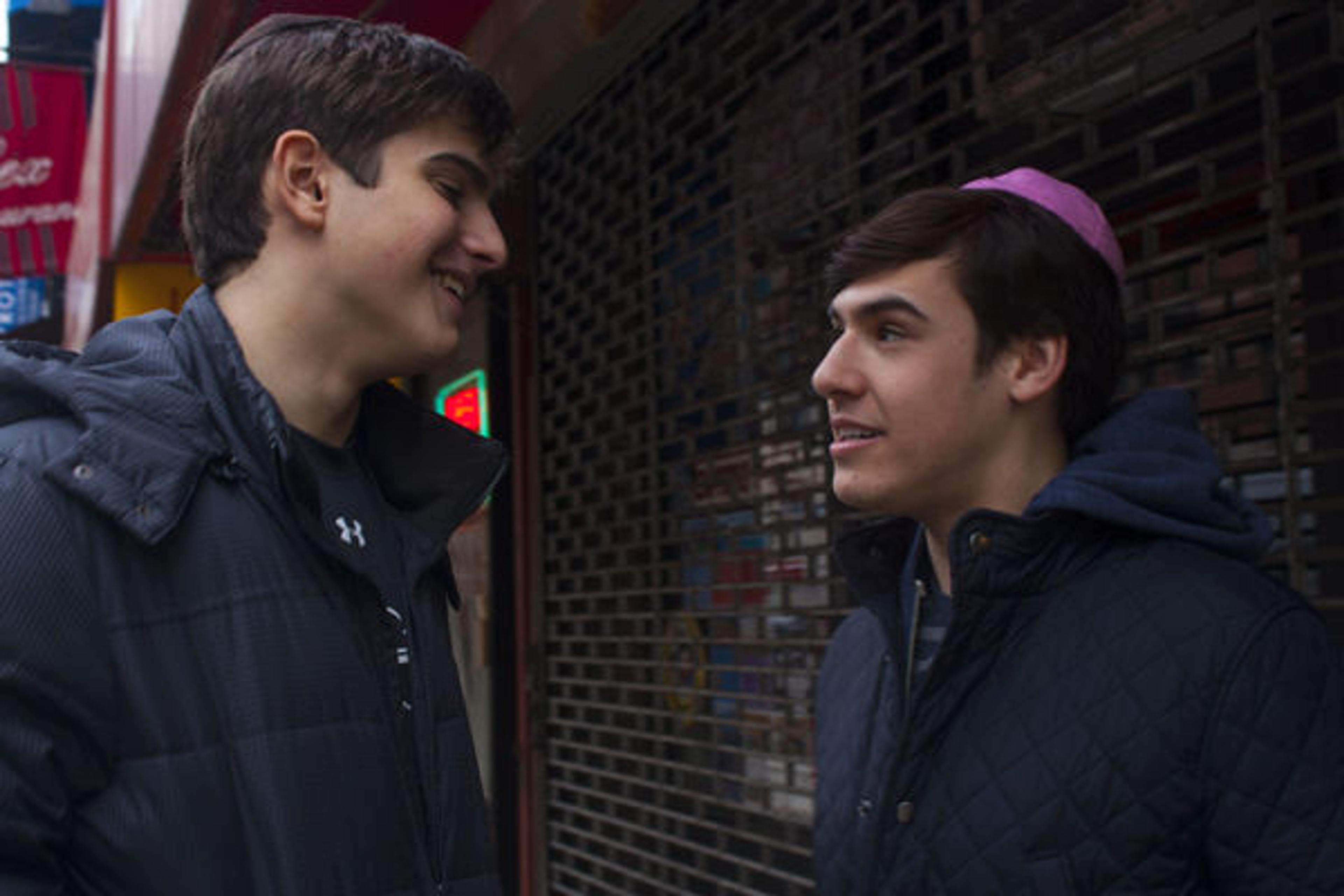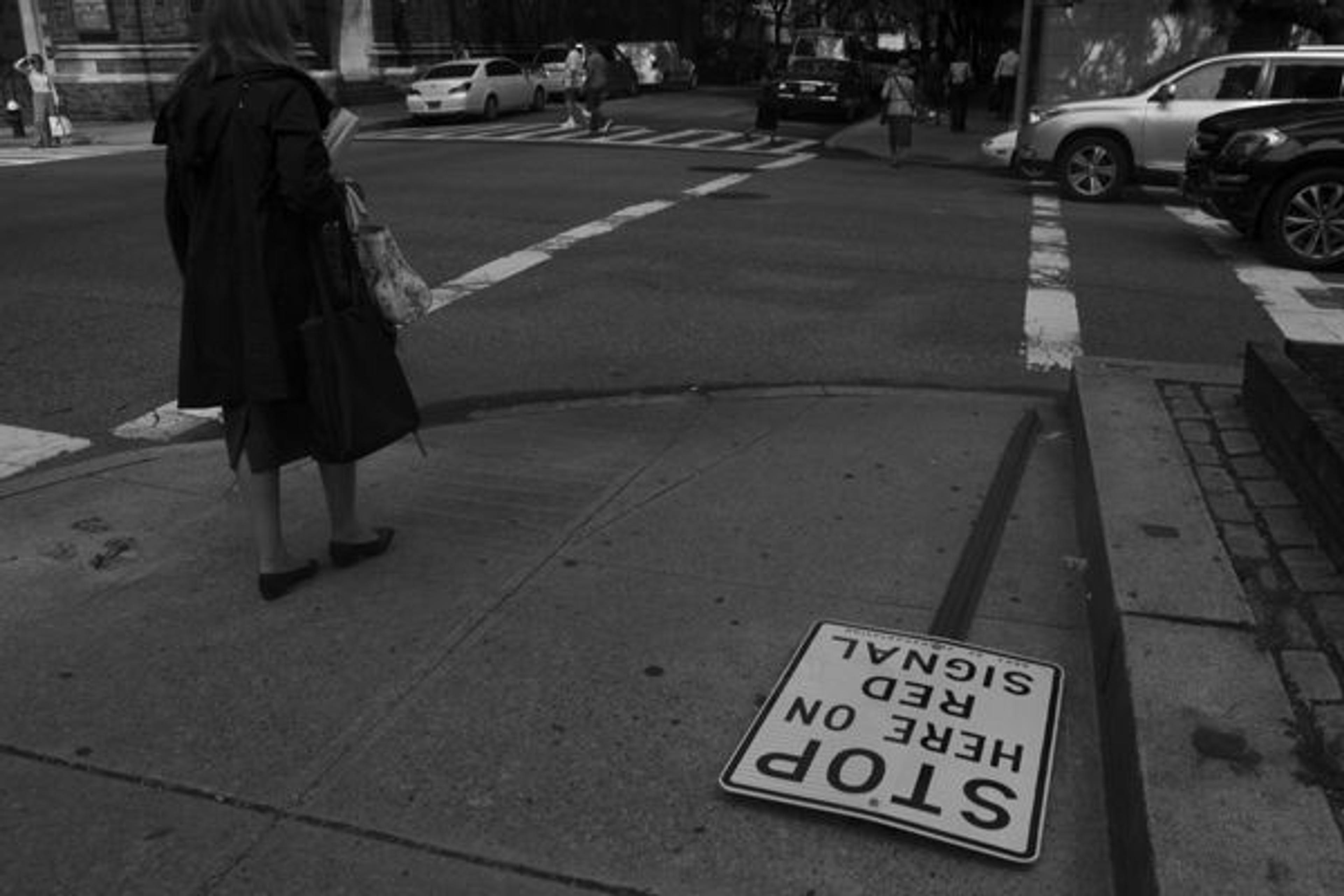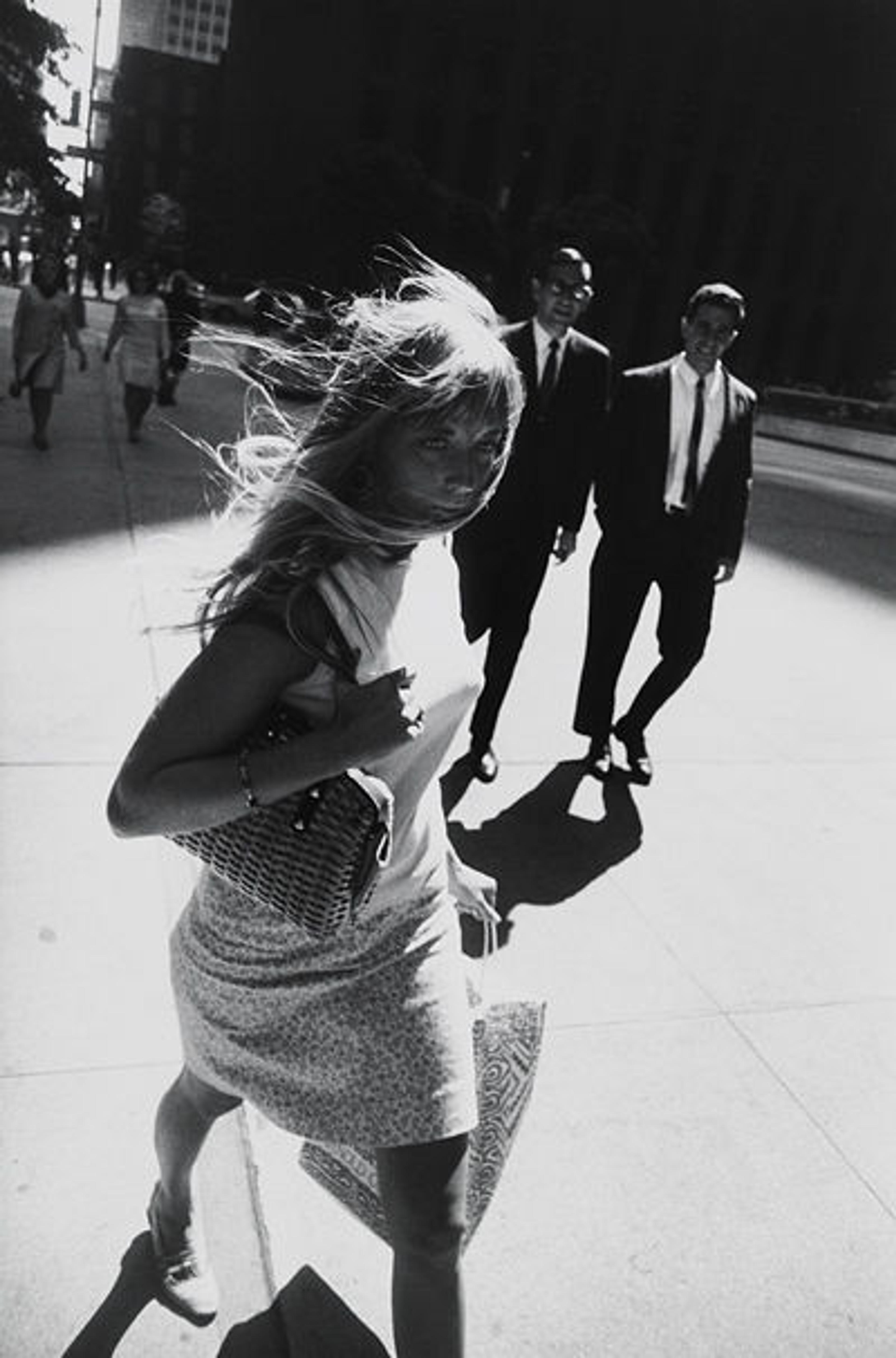Garry Winogrand (American, 1928–1984). New York, 1965. Gelatin silver print. Collection of Randi and Bob Fisher
«Garry Winogrand's street photography, currently on view in an eponymous exhibition at the Museum, is often astonishingly candid and real. But would he have been able to use his distinct style today? The Internet has made it easier than ever to share photos and spread them around. But it's also made people far more self-conscious when being photographed and, dare I say, more frightened of the camera.»
Winogrand wasn't afraid to get up close to his subjects, sticking his camera in their faces (see New York, ca. 1962) and taking shots that some would say aren't the most flattering (see El Morocco, New York). His pictures feature genuine expressions with a whirlwind of different emotions, emotions that weren't posed or conjured just for the photograph; rather, he captured people as they were (see Metropolitan Museum of Art Centennial Ball, New York City, New York). But what if he had been trying to do this today, in an age of online social media profiles and photo "tagging"? In an age when people are more self-conscious about how they look because they feel a photograph may end up on a public page and embarrass them?
Sure, people know they may appear in the background of someone's shot. When at a party or in a tourist trap like Times Square, it's clearly unavoidable. But when people realize that they are the the main focus of the photo and not just part of the background details, they often get scared. And justifiably so, in some cases. Where is this photo going to end up? Is it just for a personal project? Or is it going to be on the photographer's Facebook page with five hundred likes? Is it headed for a massive public site? People don't want to be exposed through some stranger's lens.
The photographer is also affected by this new mentality. The best way for anyone to build a following nowadays is online, through a website or social media—which could mean that the subject's photos will end up online. Therefore, some photographers, myself included, get intimidated. We end up not taking the types of candid shots that Winogrand excelled at, worried that the subject will retaliate. This is certainly how I've felt while going out and about with my camera—if I've had people veto even posed shots I've taken of them, I'm sure they'll have an issue with candid ones.

Oren (American, b. 1997). Mother and Daughter, 2014
But what if there's an amazing shot of some random strangers, something that the photographer just needs to capture? Look at this shot I took of this mother and daughter in Central Park. The mother is looking off at the lake, and the daughter is reaching out to her, struggling to get her attention. There's real emotion here! Yet I took it from the back. I felt that if I had gone out in front of them and tried to get the shot, they would've noticed and reacted in one of two ways: "Oh, can you wait a moment while we get ready? We want to look our best!" or "Why are you taking some weird photo of us? Delete that! It better not go anywhere."
But from the back… Well, there's no problem with that, if their faces aren't showing, right? There's pretty much no way to identify them unless you really know them. So that's the angle from which I took the photo. It still came out nicely and, better yet, it has an air of mystery. What's going on here? What is this mother's relationship with her daughter like? On the flip side, we're missing some emotion that could only come from seeing their faces. We can never fill in how they truly feel and be able to feel that with them.

Oren (American, b. 1997). In Conversation, 2014
Is it still possible to do candid street photography from the front while getting up close and personal? Here's a photograph I took in Manhattan that may appear to be a candid shot. You can tell right off the bat that these teens are good friends, and just look at their excitement—especially their eye contact, their undivided attention to whatever they're talking about.
Winogrand always said that he never cared much about what was going on with the subject. He mainly cared about capturing the emotion, the moment, and the people suspended inside it. To quote the man himself from a talk he gave at Rice University, "I don't get to know people when I'm photographing" (watch the video on YouTube). What's going on is left up to the viewer to imagine. (As a side note, this is an interesting contrast to many modern street photographers such as Brandon Stanton [Humans of New York], who actively goes out and greets strangers both to set up shots and get to know the subjects more personally.)
So through that lens (pun intended), the shot above shows a conversation between two friends, and I quickly snapped it before scuttling off, right? Wrong. I posed this portrait of two of my school friends. I wanted it to look candid, and I think I succeeded. But it isn't candid; it really isn't. It's artificial, in a sense. Not that I don't think it's a great photo, and this type of moment could truly have happened, but it wasn't a real conversation or a moment I just stumbled upon. I happen to know the subjects very well, which is why I could take this from the front and feel comfortable about it.

Oren (American, b. 1997). Stop Here On Red Signal, 2014
I doubt I have many real candid photos from my street photography that are taken from the front. For better or worse, photos taken from the back, in which faces are hidden, as well as posed "candid" photos, could be the new "face" (pun intended again) of candid street photography, at least for me. Winogrand was able to get the shot from the front, to capture the full emotion and moment in time. Now I often have to go from the back or set the shot up myself. I have to figure out how to capture emotion and action from an angle or a style that hides my lens.
Can I, and other photographers like me, still live up to Winogrand and his street photography, even if I don't feel comfortable truly emulating his style? What about you—do you have the subject's comfort in mind first and foremost, or are you willing to take on Winogrand's audacity in pursuit of the perfect shot?
